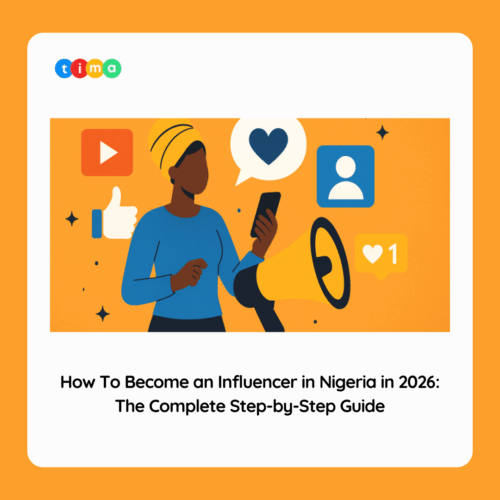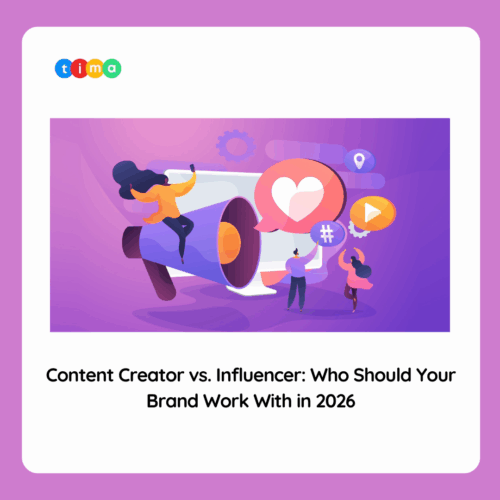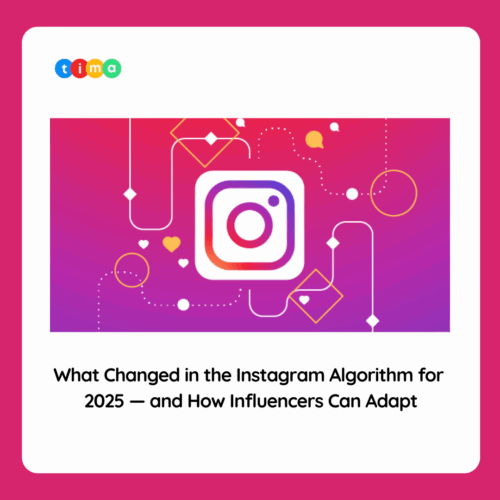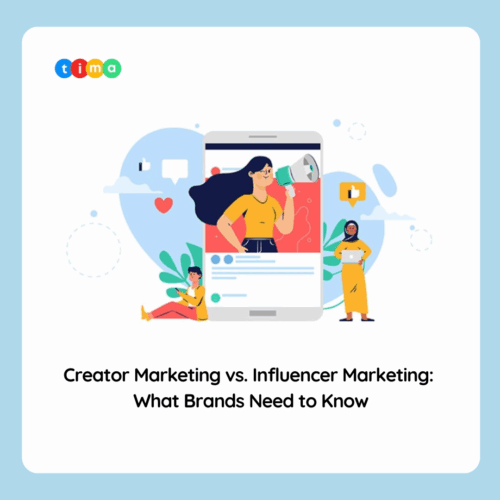Influencer marketing has become a staple of brand strategies in Nigeria. But as competition intensifies, simply picking creators with large followings is no longer enough. In 2026, the real edge will come from using AI-powered predictive tools to forecast performance, reduce risk, and drive meaningful ROI.
Predictive analytics isn’t just a buzzword. It’s a way for brands to model potential outcomes, tailor creator selection, and optimize campaign spend before contracts are signed. For Nigerian brands operating with lean budgets and aggressive growth targets, this level of foresight could be transformative.
In this guide, we’ll walk through the landscape of influencer marketing in Nigeria, explain how predictive AI tools work, and highlight best practices for using them to maximize returns. Whether you’re overseeing your first campaign or scaling a creator program, this article equips you with the strategy, benchmarks, and roadmap you need.
Why Predictive AI Matters for Influencer Marketing in Nigeria
1 The Shifting Nigerian Ad Landscape
Nigeria’s digital ad spend is growing steadily. Digital ads are projected to make up 84% of Nigeria’s total ad spend by 2029.
Within this digital spend, influencer marketing is gaining prominence. Growth in social media usage, mobile connectivity, and consumer trust in creators is fueling the shift.
Nigeria’s total ad spend crossed US$996 million, with $340 million (34.2%) allocated to digital channels.
Despite growth, brands face uncertainty: which influencers will drive results, which content formats will work, and whether engagement will convert into sales.
That’s where predictive AI comes in. It helps brands simulate campaigns with data-driven risk assessment and outcomes.
2 The Problem of Inefficiency
Without predictive modeling, brands often:
Pay for posts that don’t convert
Misspend budgets on creators with inflated reach
Fail to forecast performance across regions or demographics
Underestimate the value of engagement quality
Waste time on manual creator vetting, outreach, and campaign planning
Predictive tools reduce these inefficiencies by simulating performance before campaigns begin, allowing teams to make smarter decisions.
2. What Are Predictive AI Tools, And How Do They Work?
1 Defining Predictive Tools in the Influencer Context
Predictive AI tools for influencer marketing leverage data and machine learning to estimate likely outcomes of campaigns. Key capabilities often include:
Forecasting reach, engagement, and views
Predicting conversion likelihood and ROI
Analyzing creators’ audience authenticity and sentiment
Optimizing content mix and posting schedule
Simulating different campaign scenarios based on budget and creator mix
Some predictive systems are built on advanced models like graph neural networks, which map relationships between creators, followers, and content to predict “influence power.” Others use explainable AI frameworks built on language models to generate insights and perform high-level analytics.
2 Key Types of Predictive Tools You’ll Use
For influencer marketing, predictive tools generally fall into these categories:
| Type | Function |
|---|---|
| Creator Scoring & Discovery | Rates potential creators on their predicted effectiveness, based on audience quality, past performance, and other signals. |
| Performance Forecasting | Simulates how a campaign will likely perform (reach, engagement, conversions) under different scenarios. |
| Audience Intelligence | Profiles the demographics, interests, and sentiment of a creator’s audience to predict resonance. |
| Attribution & ROI Modeling | Uses algorithms to assign value to each touchpoint, predicting which creators will be most cost-effective. |
| Content Optimization | Suggests the best content formats, themes, or posting times based on predictive engagement and reach data. |
These tools work behind the scenes, ingesting past campaign data, creator performance metrics, and audience behavior to generate actionable forecasts.
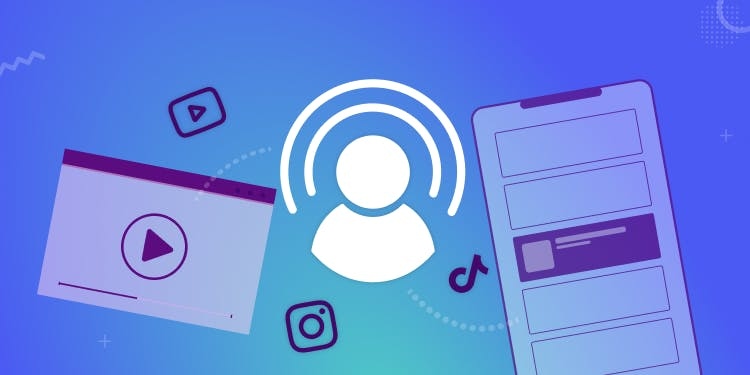
3. The State of Adoption in Nigeria: Trends & Forecasts
3.1 Digital-First Momentum
According to Nairametrics, with digital ad spend rising sharply, 84% of Nigeria’s ad budgets will be digital by 2029.
Brands are increasingly reallocating budgets to social media, video, and influencer-led campaigns, placing greater emphasis on measurable ROI.
As AI becomes more accessible, predictive tools are starting to be adopted by forward-thinking agencies and brand teams in Nigeria. Brandcom’s insight on the “rise and rise” of influencer marketing highlights how agencies are already experimenting with data-driven selection.
3.2 Market Size & Opportunity
Though precise numbers on AI + influencer spend in Nigeria are still emerging, the overall influencer advertising market in Nigeria is projected to grow. Nigeria local influencer market could hit US$5.31 million in 2025, with steady year-on-year growth.
Globally, the influencer market is expanding rapidly. The global influencer marketing platform was estimated at US$23.6 Billion in 2024 and is expected to reach US$47.7 Billion by 2030, with growing opportunities for Nigerian brands to tap international-scale tools.
Adoption of AI in marketing is gaining ground: as brands seek ROI certainty, predictive influencer tools are becoming a strategic part of campaign planning.
How Brands Can Use Predictive AI for Influencer Marketing Campaigns in Nigeria
1 Use Case 1: Creator Selection & Vetting
Problem: Traditional selection based on follower count or network relationships might overpay or pick the wrong creators.
AI Solution:
Use a creator scoring tool that aggregates and scores creators based on audience authenticity, sentiment, and previous performance.
Filter creators by predicted conversion potential rather than just reach.
Simulate different creator combinations to see which roster is likely to generate best ROI.
Example: A fintech brand in Lagos uses a predictive discovery tool to shortlist nano/micro creators who are likely to influence Gen Z in Abuja and Port Harcourt, because the model shows high purchase-intent signals in their followers.
2 Use Case 2: Campaign Forecasting & Budget Simulation
Problem: Brands don’t know how much reach or ROI to expect; manual planning is slow and error-prone.
AI Solution:
Run simulations: input your budget, campaign duration, creator mix, and deliverables.
Forecast reach, engagement, and even conversions.
Compare different scenarios (e.g. “5 macro creators vs 20 micro creators”) to pick the most efficient mix.
Benefit: Marketing teams can create data-driven campaign briefs that make budgeting decisions with confidence, avoiding guesswork.
3 Use Case 3: Content Strategy Optimization
Problem: Brands don’t know which type of content or format will resonate best.
AI Solution:
Predictive content optimization tools analyze creator content history and audience behavior.
Recommend optimal formats (e.g., short video, long-form, carousel), posting times, and themes.
Provide insights on messaging tone that correlates with predicted engagement or conversion.
Outcome: Higher-performing content with less trial and error; better ROI per content piece.
4 Use Case 4: Attribution & ROI Measurement
Problem: It’s challenging to accurately attribute conversions to influencer touchpoints and measure true ROI.
AI Solution:
Use predictive attribution models to assign value to each creator’s impact.
Track user journeys across platforms and assign credit to creators based on conversion probability.
Generate post-campaign reports that show projected vs actual ROI and recommend reinvestment strategies.
Advantage: Brands can scale campaigns that work, drop underperforming creators, and reallocate budget intelligently.

A Step-by-Step Framework for Implementing Predictive Tools
Here’s a practical roadmap for brand managers to roll out predictive AI tools in influencer marketing:
Audit Current Campaigns
Gather past influencer campaigns, performance metrics, spend, and outcomes.
Identify gaps: where did reach underperform, where were conversions weak, etc.
Select the Right Predictive Tool
Evaluate AI platforms based on your needs: creator scoring, forecasting, attribution, or all of the above.
Choose a tool that supports your region (i.e., works well with African creator data) or is customizable.
Model Scenarios
Input different budgets, creator mixes, and deliverables into the tool.
Generate outcome forecasts.
Run “what-if” analyses (e.g., if you increase or decrease spend by 20%, what changes?).
Select & Onboard Creators
Use the forecasting outputs to create a shortlist.
Brief creators with clear deliverables, expectations, and performance KPIs.
Negotiate contracts based on predicted performance and usage rights.
Deploy Campaign
Launch content with scheduled deliverables, using predictive insights for optimal timing and format.
Monitor real-time performance and compare with forecasted metrics.
Evaluate, Reconcile & Report
Post campaign: reconcile forecast vs actual performance.
Use attribution data to see which creators contributed most to your KPIs.
Feed learnings back into the tool and reoptimize for future campaigns.
Scale or Pivot
Scale up successful creator cohorts.
Stop or renegotiate underperforming ones.
Reinvest savings into high-performing content or creators.
Challenges & Considerations for Nigerian Brands
While predictive AI offers transformative potential, there are challenges to be aware of, especially in Nigeria’s market:
1 Data Quality & Local Relevance
Many predictive tools were built and trained on global datasets, which may not fully reflect Nigerian creator behavior or audience dynamics.
There can be bias: AI may undervalue creators with smaller followings if their performance history isn’t well-documented.
2 Cost & Access
High-quality predictive tools often come with subscription fees that may be expensive for smaller brands or marketing teams.
There may be a need for data integration: CRM, analytics, and creator databases must feed into the AI model correctly.
3 Skills & Buy-In
Marketing teams need training to interpret AI outputs, especially probabilistic forecasts.
Leadership must trust AI-driven decisions, which requires building a culture of data-driven experimentation.
Some stakeholders may still prefer traditional judgment over algorithmic predictions.
4 Regulatory & Ethical Risks
Predictive tools use personal data; brands must ensure compliance with data privacy laws.
Transparent disclosure is important if AI is heavily influencing creator selection or content planning.
There is risk of over-optimizing for predicted conversions and losing creative authenticity, which can alienate audiences.
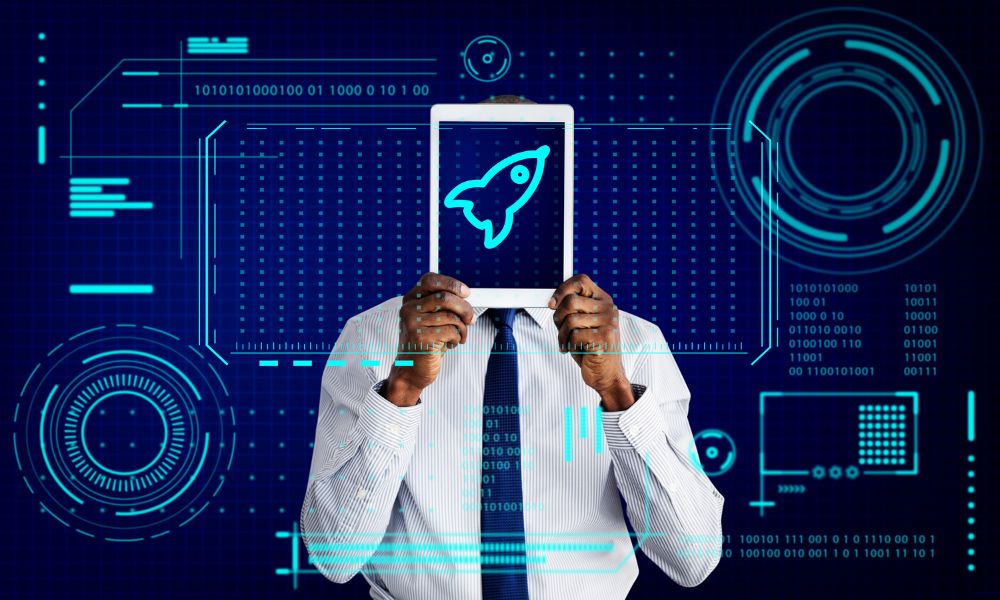
Future Trends: What’s Next for AI + Influencer Marketing in Nigeria
Looking ahead to 2026 and beyond, several trends are likely to shape the intersection of AI and influencer marketing in Nigeria:
Virtual & Generative Influencers
Generative AI is enabling virtual KOLs that can be created at lower cost and used for scalable campaigns.
These virtual personalities might serve regional audiences with culturally relevant personas.
Explainable AI for Marketing
Models like SOMONITOR combine explainable AI with marketing analytics to help marketers understand not just what is predicted, but why.
This transparency builds trust in forecasted outcomes.
Network-Based Influence Models
Newer AI methods such as graph neural networks are being used to predict influencer success by modeling relationships, engagement patterns, and conversion potential.
Brands could use this to identify “rising creators” who are under the radar but very influential.
Long-Term Predictive Partnerships
Predictive tools will become a core part of long-term creator-brand partnerships, helping brands forecast performance over 6–12 month cycles rather than just short campaigns.
Tools may also simulate lifetime value (LTV) of creator audiences.
AI + Commerce Convergence
With social commerce rising in Nigeria, predictive AI could project which creators are best suited to drive live shopping, product drops, or affiliate campaigns.
AI may eventually help brands decide product pricing, content bundles, and creator commission models in real time.
ROI Scenarios: What Brands Can Reasonably Expect
Here are example ROI scenarios for Nigerian brands using AI-driven predictive tools. These are illustrative, based on modeled outcomes and market benchmarks — adjust them to your situation.
| Campaign Type | Budget (USD) | Predicted Reach | Predicted Conversion / ROI |
|---|---|---|---|
| Awareness-only (brand launch) | $10,000 | 1M impressions + 200K video views | ~0.5% conversion to landing page → ~1,000–2,000 leads |
| Mid-tier (engagement + traffic) | $15,000 | 50K+ engagements + 400K impressions | ~3–5% click-through rate, ~2% conversion to website signup or trial |
| Conversion (sales) | $20,000 | ~20–30 creators, mix micro + macro | ~5–10% engagement to conversion; CPA (cost per acquisition) optimized through predictive attribution |
These scenarios are not guarantees. But with predictive tools, you can run “what-if” modeling to test your risk, align budgets, and set realistic KPIs, instead of winging it.
How to Start Piloting Predictive AI in Your Influencer Strategy
Here’s a mini action plan for Nigerian brand teams who want to begin using predictive influencer tools now:
Choose a Predictive Tool
Explore platforms that support creator scoring, forecasting, and attribution.
Ask for a pilot or trial. Many AI platforms offer limited free access or proof-of-concept deals.
Run a Small Test Campaign
Use the tool to model a small influencer campaign (e.g., $5,000–$10,000) before scaling.
Select a few creators based on predictive outputs.
Measure & Compare
Launch with full tracking (UTM links, custom landing pages).
After campaign ends, compare actual performance vs forecasted metrics.
Document deviations, learnings, and adjust.
Build Internal Trust
Present the findings to stakeholders (CMO, CFO, CEO) with side-by-side “predicted vs actual” performance.
Share insights into ROI, reach, and optimization decisions.
Scale Smart
For successful creator cohorts or content types, increase budget gradually.
Re-run predictive simulations with updated data and use attribution results to inform future forecasts.
Real-World Example: How This Would Work for a Nigerian Brand
Imagine you are a consumer electronics brand based in Lagos, planning a new smartphone launch for Q4 2026.
Budget: $25,000 allocated for influencer+creator marketing.
Objective: Generate awareness, drive Pre-orders, collect email leads.
Strategy (with predictive AI):
Use creator scoring to shortlist 8–10 creators: a mix of tech micro-influencers, lifestyle creators, and niche reviewers.
Run simulations to estimate reach, engagement, and likely pre-order conversion.
Use AI content tools to predict which content formats (video unboxings, reels, tutorials) will perform best in different Nigerian regions.
Forecast ROI under two scenarios: “10 micro creators” vs “5 macro creators + 5 micro.”
Campaign Execution:
Brief creators with clear deliverables, timeline, and UTM-tracked landing page.
Monitor performance in real time.
Post-Campaign Analysis:
Use attribution modeling to determine which creators drove most pre-orders.
Compare predicted conversions to real conversions, understand prediction accuracy.
Decide whether to re-engage those creators for future product drops or scale with similar profiles.
Using predictive tools like this means you’re not just spending money, you’re investing in a data-driven hypothesis and validating it in real life.
Risks and How to Mitigate Them
Predictive tools are powerful, but not infallible. Here are common risks and how Nigerian brand teams can guard against them:
Over-reliance on forecasts: Use predictive results as guidance, not gospel. Always run validation campaigns.
Data bias: Ensure the tool you pick understands local behavior, creator audiences, and regional data. Request localized calibration.
Privacy concerns: Make sure data collection and usage comply with Nigeria’s data privacy regulations.
Creative alienation: Don’t force predictive insights to override creators’ voice and style. Use them collaboratively.
Cost vs ROI balance: High-powered AI tools may require subscription costs. Measure their value via improved efficiency, not just forecast outputs.
Conclusion
AI and predictive tools are no longer futuristic; they are practical, powerful levers you can pull to make influencer marketing more reliable, measurable, and cost-efficient in Nigeria. For brand managers in Lagos, Abuja, or beyond, they mean better decision-making, reduced risk, and campaigns that deliver what they promise.
By embracing predictive analytics, you no longer roll the dice when investing in creators. You simulate, iterate, and optimize and in doing so, unlock real ROI. Start small, pilot, measure, and scale. The brands that adopt this model in 2026 will outsmart their competition.
If you’re ready to make prediction a core part of your influencer marketing playbook, consider using TIMA’s data-driven platform to help discover creators, forecast outcomes, and track the impact of every campaign — not just in reach, but real business.



